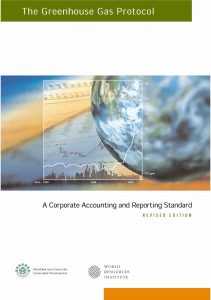White House, agencies advance federal contractor GHG accounting
Sources: White House Council on Environmental Quality, Office of Federal Chief Sustainability Officer; CM2 staff
The White House-proposed “Federal Supplier Climate Risks and Resilience Rule” outlines greenhouse gas emissions disclosure requirements for companies performing construction or other services for federal projects, facilities and agencies. “Major” contractors, or those booking more than $50 million annually in federal contracts, would have to disclose Greenhouse Gas Protocol-defined Scope 1, 2 and 3 emissions levels plus climate-related financial risks, and set GHG emissions reduction targets. “Significant” contractors, or those booking $7.5 million-$50 million annually in federal contracts, would have to report Scope 1 and Scope 2 emissions. Contractors with less than $7.5 million in annual federal contracts would be exempt.
The proposed rule cites the global CDP (formerly Carbon Disclosure Project) and Science-Based Targets initiative (SBTi) GHG auditing mechanisms. It calls for contractors reporting Scope 1 and Scope 2 emissions figures through CDP or equivalent protocol, and GHG emissions reduction target validation through SBTi. The White House Council on Environmental Quality is opening “Federal Supplier Climate Risks and Resilience” to public comment through early January. Concurrently, the Department of Defense, General Services Administration and National Space and Aeronautics Administration propose “Disclosure of Greenhouse Gas Emissions and Climate-Related Financial Risk,” amending Federal Acquisition Regulation to mirror the “Federal Supplier” Major and Significant contractor guidelines.
Related articles
Carbon policies ignite fires under federal agency seats
Cement, concrete producers outpace SEC rule requirements

In addition to ISO 21930 CO2 emissions parameters, the World Resources Institute/World Council for Sustainable Business Development-backed Greenhouse Gas Protocol defines three initial phases for which material and product suppliers, processors or manufacturers report CO2 loads:
• Scope 1 Direct GHG Emissions
• Scope 2 Electricity Indirect Emissions
• Scope 3 Other Indirect Emissions